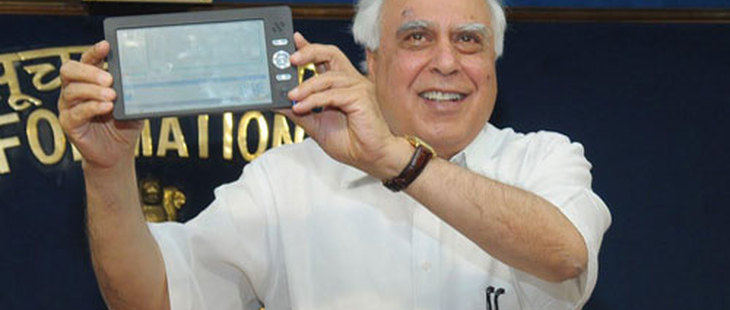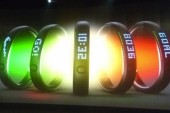
It’s been the kind of week in which our complicated relationship to technology has been impossible to ignore. First, the announcement of the iPhone 4S generated an almost absurd degree of media attention. Now, a couple of days later, as news of Steve Jobs’ passing spreads, the web is full of genuine, heartfelt anecdotes of how Macs and iPhones enabled people to do so much. It was all extremes: the circus that is the tech world, swirling around the core of its inarguably transformative effect.
But a few thousand miles away, another announcement had been made that was both part of these contradictions and entirely separate from them. In New Delhi, India’s Industry minister Kapil Sibal showed off a new government-sponsored tablet computer for students that will eventually sell for the subsidized price of $35. Designed by Montreal-based Datawind, the Aakash tablet has a 7” screen and runs a basic version of Google’s Android operating system.
It was one of those moments in which the yawning chasm between the wealthy western tech world and the realities of a developing country was made clear. As we in the west wondered whether the upgraded CPU and camera of the new iPhone were worth it, Sibal described the new tablet in explicitly social, political terms. “This is for all of you who are disempowered,” he said. “This is for all of you who have no access.” Meanwhile, popular American tech website Mashable asked if it were “worth compromising speed to bring access to millions who otherwise could not afford a tablet computer or any computer at all?”, a question that surely deserves some sort of prize for obliviousness.
The disparity, however, speaks to the radical difference in what technology means around the world. The Aakash tablet is aimed at India’s poorer university students so that they can download textbooks and electronic courses. This isn’t simply a case of an Education Minister with a tech fetish and a budget, either. India needs its youth to learn quickly. Despite breathtaking economic growth and increasing importance as a digital powerhouse, only 8 percent of India’s 1.2 billion people are online. Next door, China is at 40 percent. India has no choice but to move fast.
But that’s the odd way of things in 2011. Part of the enormous challenge of raising hundreds of millions out of poverty involves solving the problem of the digital divide. It’s not so much that large swaths of India’s rural poor need to check their email. Rather, it’s that each village might have a few sons and daughters become skilled enough to get jobs in cities, creating economic links between the growing middle class and the poor who still outnumber them.
“The rich have access to the digital world, the poor and ordinary have been excluded. Aakash will end that digital divide,” said Sibal, putting that familiar, sweeping tech rhetoric to a quite different end. That the government cannot yet deliver on that promise is, of course, certain. Even 5 million tablets is but a tiny dent in the problem. But this mass intervention of the state into the spread of technology speaks to just how central it’s become.
Last night, Twitter lit up with messages about Steve Jobs’ passing. But if you wanted, you could also watch the honest snippets of sadness scroll by tweets from Occupy Wall Street, Yemen or Syria. It was, if not unsettling, then at least a reason to pause. As the world shrinks, the contradictions of modern capitalism become starker and more immediate. As millions mourn through their iPads, hundreds of millions go hungry, and it’s almost as if the two situations freeze each other in place, locking an explosive moment of history into something like a game of absurd yet mutually constitutive contradictions, each side’s outpouring of anguish too much for the other to accept.
So it’s almost as if we’re left with two screens: a dim 7-inch once, tested for the 50 degree temperatures of the North Indian summer; and another, 3.5-inches, through which one can pay for a $4 latte. Two windows, looking out onto two different worlds–a distorted, malfunctioning two-way mirror, on which no-one can catch any sort of reflection. Like a border, made of glass, darkened beyond use because there is far too much too see.
__
Navneet Alang is the Toronto Standard Tech Critic














